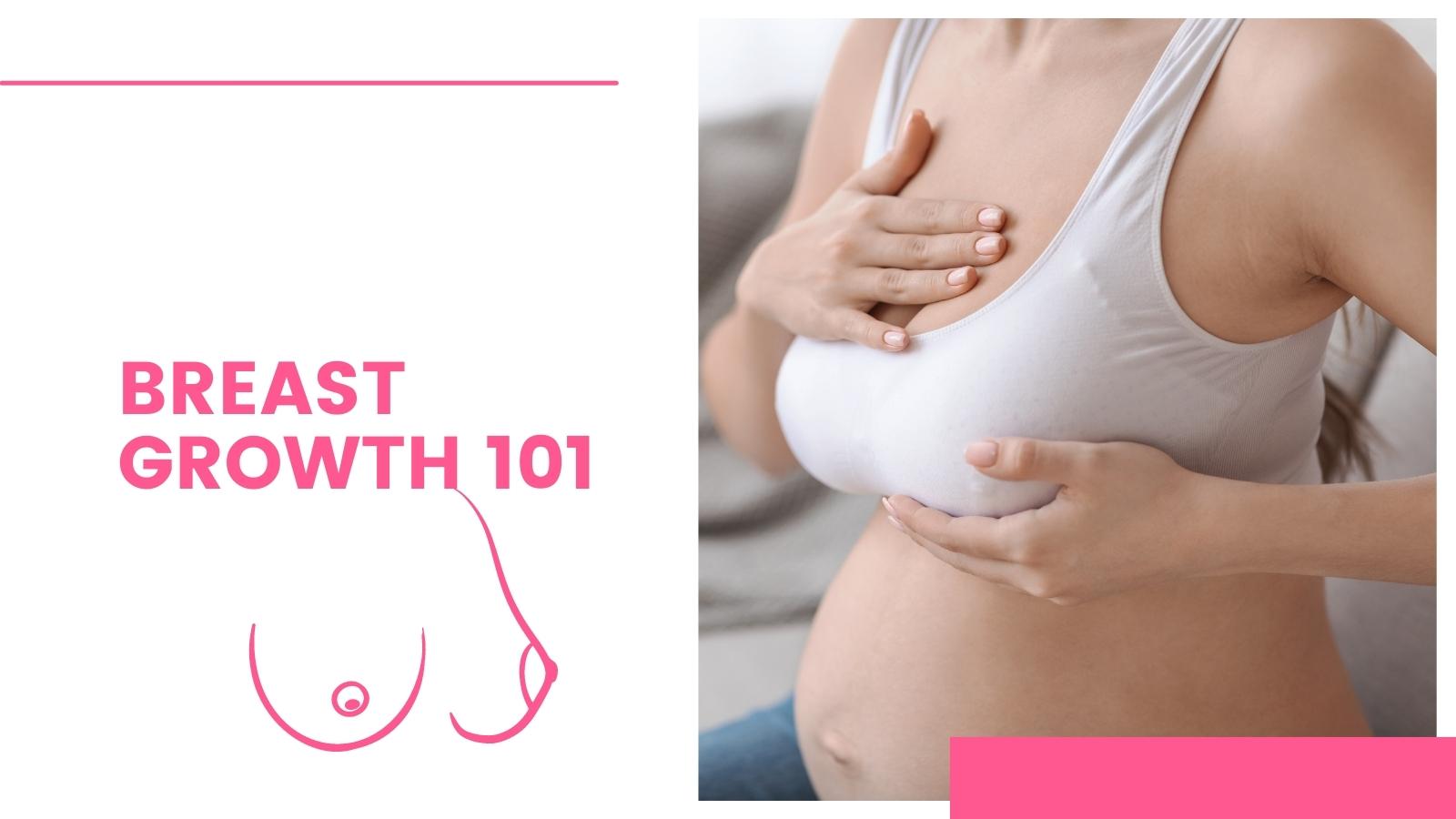How Do You Know If Your Boobs Are Growing?
This post was last updated on January 17th, 2024

Contents
ToggleBreast Growth 101: How Do You Know If Your Boobs Are Growing?
Breast growth is a natural and significant part of a woman’s life. Understanding how your breasts may change over time is essential for self-awareness and overall breast health.
In this blog, we’ll discuss breast growth, discover the tiers of improvement, and discuss signs and symptoms, and indicators to help you perceive if your breasts are growing.
So how do you know if your boobs are growing? Well, read on to find out more!
Understanding Breast Development
Breast development typically starts throughout adolescence, typically between 7 and 14 years of age.
Various changes arise inside the body at some stage in this era, with breast increase being one of the most apparent adjustments. Hormones, in particular estrogen, and progesterone, are by and large tormented by breast boom hormones. Breast growth varies from person to character. However, it usually follows an everyday pattern.
It breasts begin with forming “breast buds,” small lumps under the nipple area. As breast growth continues, the breast tissue, composed of many muscles, grows, giving the breasts a larger and fuller appearance. This process continues until the breasts reach their adult size and shape.
Genetics plays a role in determining breast size and shape. However, lifestyle factors, weight-reduction plans, exercise, and usual fitness can also impact breast improvement. Knowing that breast development isn’t always restricted to puberty is critical.
Changes in breast size and shape can occur throughout a lady’s life, including pregnancy, weight fluctuations, and menopause.
Signs and Indicators of Breast Growth
1. Frequent readjustment
If you constantly readjust your bra throughout the day, it could be a sign that your breasts are growing. A bra that fits perfectly before may not be suitable anymore as your breast size increases.
2. Spillage or overflow
When your breasts develop and outgrow the cups of your bra, you may experience spillage or overflow. This is a clear sign that your boobs are growing, and it’s time to consider a larger cup size. Cups should fully encase the breasts without causing spillage for optimal comfort and support.
3. Straps digging in
As your breasts increase in weight size, the pressure on your shoulder straps also grows. If you see your straps digging into your shoulders, it’s a sign that your breasts are growing. Wider and adjustable straps can help distribute the weight more evenly and alleviate discomfort.
4. Band riding up
A band that rides up at the back indicates that your breasts are growing. The band is responsible for providing support and keeping the bra in place. A snug-fitting band that sits parallel to the ground is ideal, ensuring optimal support for your growing breasts.
5. Changing shape
Changes in breast shape, such as fuller breasts or a wider bustline, are signs of breast growth. Your bra should accommodate these changes to provide comfort and a proper fit. Bras with stretchable fabrics or styles designed for breast growth can be beneficial during this transition.
Recommended: Common Bra Problems That Women Would Only Recognize
Tracking Breast Growth
Monitoring breast growth can help you stay informed about your breast health. Here are some useful tips for monitoring breast growth:
- Regular breast exams: Do a self-examination to check for any unusual changes in your breasts, such as lumps or abnormal skin. If you notice anything concerning, consult a healthcare professional.
- Measurement techniques: Use measurement techniques to track changes in breast size. This can be done by determining the circumference of your breasts or using a bra size chart as a reference.
- Maintain a breast growth journal or diary: Keeping a record of any changes you observe in your breasts, including:
- Size
- Tenderness
- Other indicators
When to Seek Medical Advice
While breast growth is a normal part of life, there are instances when it’s important to seek medical advice. Here are some scenarios where consulting a professional is important:
- Unusual or sudden changes in breast size or shape: If you notice significant and unexpected changes in your breasts, such as:
- Rapid enlargement
- Dimpling
- Skin changes
It’s important to seek medical attention.
- Regular breast health screenings and exams: Regular check-ups with a health care provider and breast cancer screenings such as mammograms are important to maintain breast health and detect potential problems early.
- Common breast-related concerns: If you have any concerns about your breasts, such as:
- Persistent pain
- Unusual discharge
- Changes in breast texture
Visit a doctor for a proper evaluation.
Frequently Asked Questions
When do breast buds typically appear during normal breast development?
Breast buds, the first signs of breast growth, usually appear during the early stages of puberty. This typically occurs between ages 8 and 13, but the timing can vary from person to person.
Can breast growth occur outside of the puberty phase?
Breast growth can occur at various stages of a woman’s life. Apart from puberty, breasts may continue to develop and change during pregnancy, as well as due to:
- Weight fluctuations
- Hormonal changes during the menstrual cycle
- Hormonal shifts associated with menopause.
What is glandular breast tissue, and why is it important in determining breast growth?
Glandular breast tissue refers to the specialized tissue found in the breasts that contains milk glands responsible for producing milk. This tissue is important because it is significant in breast development and growth. As breasts grow, the amount of glandular breast tissue present increases, resulting in larger and fuller breasts.
Does breast size indicate fertility or reproductive health?
Breast size alone is not an indicator of fertility or reproductive health. Genetic factors, hormonal changes, and the amount of glandular and fatty tissue in the breasts primarily influence breast size. Fertility and reproductive health are determined by various other factors, and breast size alone should not be used as a sole measure of fertility.
Are changes in breast size during the menstrual cycle normal?
It is common for breast size to fluctuate during the menstrual cycle. Hormonal changes during the menstrual cycle can cause temporary breast enlargement, tenderness, or swelling. These changes are typically normal and should resolve once the menstrual cycle is complete.
However, if you notice persistent or concerning changes in breast size or other symptoms, you should consult a doctor for further evaluation.
Final Thoughts
Understanding breast growth and awareness of the changes in your breasts is vital for your overall well-being. By familiarizing yourself with the stages of development, recognizing signs of growth, and tracking changes over time, you can stay informed about your breast health.
If you have any concerns or notice any unusual changes, try visiting Bust Bunny; they give insights about your breast on how to take care of them properly and consult a healthcare professional for proper evaluation and guidance. Your breast health matters, so stay informed and take care of yourself.
You may like this
Recommended For You
Moving into My New House
Most Inside
Most Inside offers high-quality recommendations and valuable updates to enhance all aspects of your life, providing premium guidance and enriching experiences.




